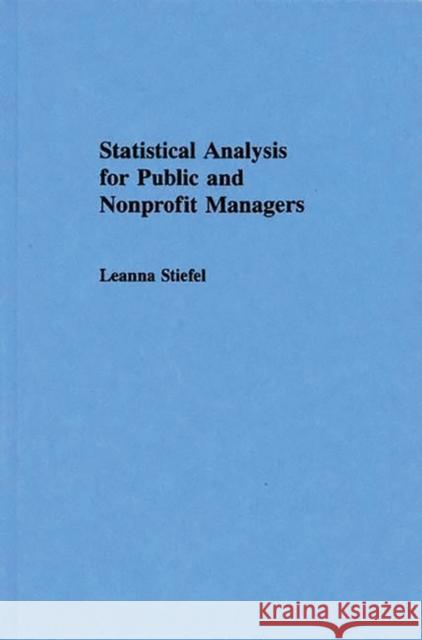Statistical Analysis for Public and Nonprofit Managers » książka
Statistical Analysis for Public and Nonprofit Managers
ISBN-13: 9780275933012 / Angielski / Twarda / 1990 / 223 str.
Designed for use by professionals and graduate-level students in public administration and not-for-profit management, this is a comprehensive, clearly written guide to the use of statistical analysis in the management of nonprofit organizations. The volume emphasizes statistical models that use more than one variable and is unique in presenting multivariate statistics specifically with the public and nonprofit manager in mind. Examples throughout have been chosen to be relevant to the not-for-profit organization and each chapter contains several real-life illustrations of how statistical techniques can be used in actual practice. In addition to explaining statistical methods and techniques in detail, the author focuses on why statistics should be used and helps the reader obtain an intuitive grasp of the rationale behind the statistics. Because she stresses the logic of proofs and the limitations of results rather than the pure mathematics of statistical derivation, the volume is accessible to students and managers with only a little statistical background.
Following a chapter that introduces the concept of multivariate analysis, Stiefel explains simple and multiple regression models in detail. Later chapters discuss other techniques that are becoming widely used in not-for-profit organizations: logit and probit analysis, time-series models, and simultaneous equation models. Two types of examples are used to make the material immediately relevant to the not-for-profit manager: real-world examples culled from professional journals and reports in a variety of fields including health care, education, finance, budgeting, and administrative science; and examples of results obtained using statistical programs run on a personal computer. Thus the book enables the reader to understand and interpret both the statistics used in professional articles and statistical results as they appear on computer printouts. Four appendixes review basic statistical methods such as simple summation operators, the Pearson Correlation Coefficient, and hypothesis testing for the sample mean.











